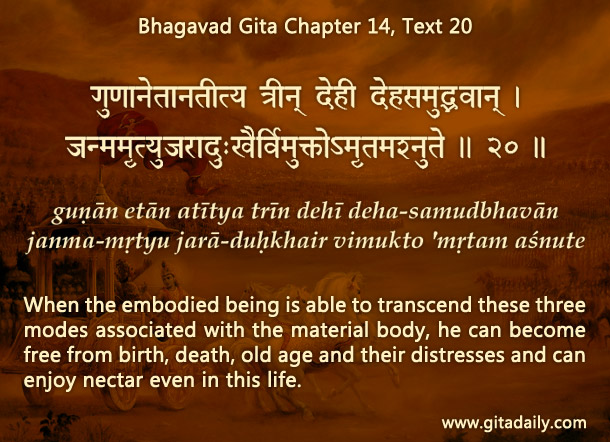Deeming everything an illusion is not liberation – it just makes even liberation an illusion
Some people say, “Everything is an illusion. Those who understand that everything is an illusion attain liberation.”
However, if everything were an illusion, how could anyone assert that everything is an illusion? Wouldn’t that assertion also be an illusion? More fundamentally, wouldn’t that asserter also be an illusion? When we see water in a desert, we understand that water is a mirage, an illusion; but that observation is not an illusion, nor are we the observer an illusion.
Moreover, if everything is an illusion, then liberation is also included in everything. Liberation becomes just a conception in the mind of someone who is a product of illusion. Thus, the purpose of coming out of illusion – liberation – ends up coming within the scope of illusion, a glaring self-contradiction.
What, then, is the reality? The Bhagavad-gita explains that we are real, for we are souls, who are parts of the supreme reality, Krishna. And the world too is real, for it emanates from Krishna. What is illusion is our conception about ourselves and the world – we see ourselves as our bodies and see the world as an arena for our enjoyment. However, we are meant to lovingly serve Krishna and to use the world for serving him.
What puts us in illusion? Material nature, through its modes. Or more precisely, our desire to enjoy various worldly objects that are the products of the modes. When we see that the observers – both we and our Lord – exist beyond the modes (14.19), we go beyond the illusion created by the modes and attain liberation (14.20). Bhakti-yoga is the process that connects us most expeditiously with Krishna, thereby taking us beyond illusion (14.26).
Rather than deeming everything an illusion, we need to take shelter of the one beyond illusion (07.14).
Think it over:
- Is everything an illusion? If not, why not?
- What exactly is illusion?
- How can we come out of illusion?
To know more about this verse, please click on the image
Explanation of article:
https://www.youtube.com/watch?v=ibFEkoyYDAg


Hari bol.. thanks for presentating such wonderful Insights..
Brilliant!